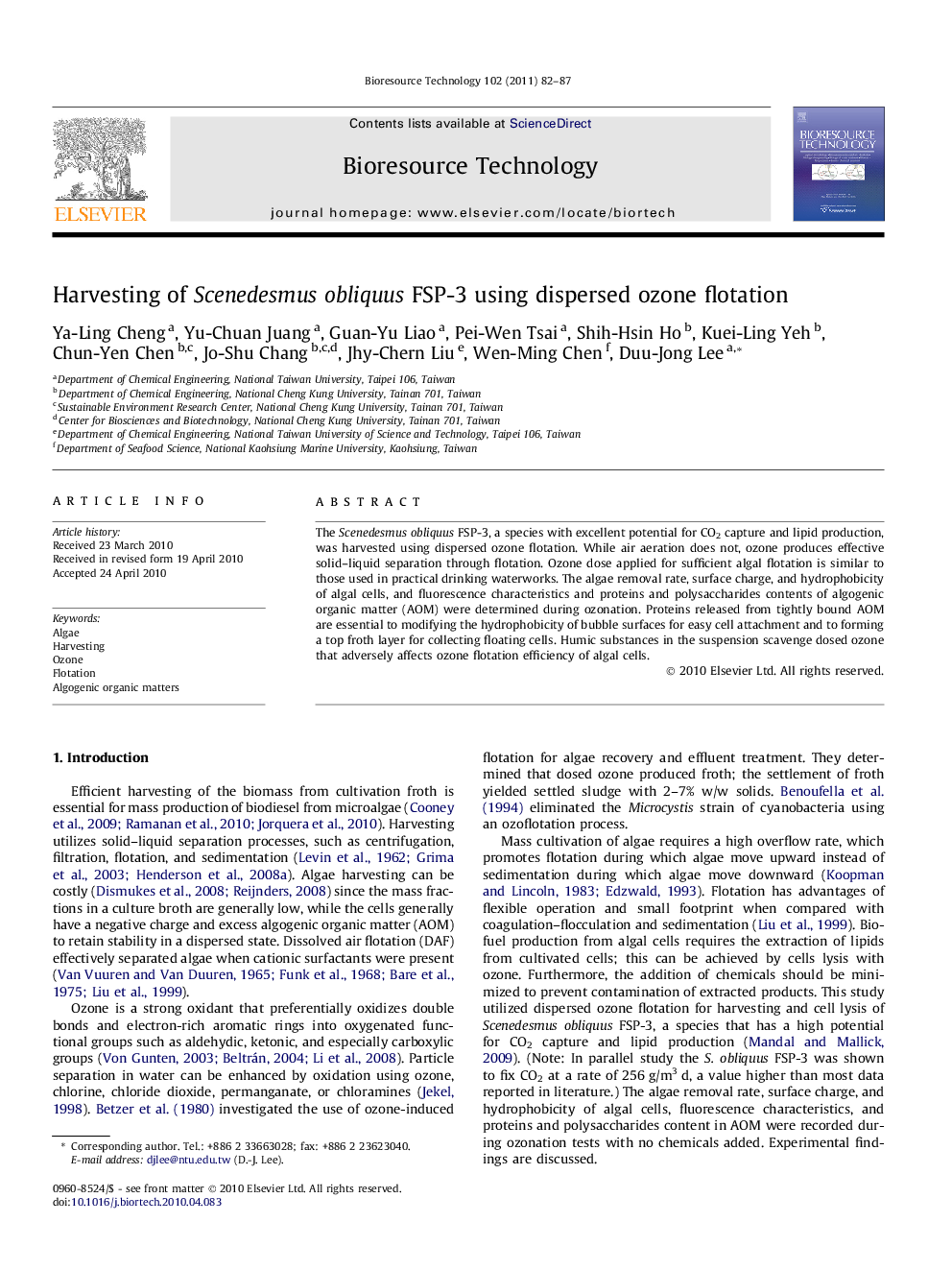| Article ID | Journal | Published Year | Pages | File Type |
|---|---|---|---|---|
| 682358 | Bioresource Technology | 2011 | 6 Pages |
The Scenedesmus obliquus FSP-3, a species with excellent potential for CO2 capture and lipid production, was harvested using dispersed ozone flotation. While air aeration does not, ozone produces effective solid–liquid separation through flotation. Ozone dose applied for sufficient algal flotation is similar to those used in practical drinking waterworks. The algae removal rate, surface charge, and hydrophobicity of algal cells, and fluorescence characteristics and proteins and polysaccharides contents of algogenic organic matter (AOM) were determined during ozonation. Proteins released from tightly bound AOM are essential to modifying the hydrophobicity of bubble surfaces for easy cell attachment and to forming a top froth layer for collecting floating cells. Humic substances in the suspension scavenge dosed ozone that adversely affects ozone flotation efficiency of algal cells.
